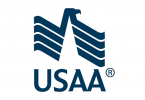There are various options available for student loan forgiveness in the state, which many Michigan residents might be eligible for without realizing.
As higher education costs continue to rise, student loan debt has become a significant financial burden for many individuals in Michigan.
This article will explore ten programs and initiatives that can help Michigan students alleviate their debt and achieve financial freedom.
10 Options for Student Loan Forgiveness in Michigan
On average, borrowers in Michigan carry a student loan debt of over $36,000. Among state residents in Michigan, 14.0% have student loan debt, with 22% owing more than $20,000, and 2% are burdened with debts exceeding $200,000.
However, the state of Michigan and the United States Department of Education have programs that offer student loan forgiveness opportunities to alleviate the financial strain associated with substantial student loan debt.
1. Public Service Loan Forgiveness (PSLF) Program
The Public Service Loan Forgiveness (PSLF) Program is a federal initiative that forgives the remaining student loan balance for borrowers who have made 120 qualifying payments while working full-time for a qualifying employer.
Eligible public service jobs in Michigan include positions in government organizations, non-profit organizations, and public school systems.
2. Teacher Loan Forgiveness Program
Michigan offers a Teacher Loan Forgiveness Program to attract and retain qualified educators.
Teachers who work in low-income schools or educational service agencies may be eligible for loan forgiveness of up to $17,500.
To qualify, teachers must teach in a designated subject area for a specified period, typically five consecutive years.
3. Michigan State Loan Repayment Program (MSLRP)
The Michigan State Loan Repayment Program (MSLRP) provides loan repayment assistance to healthcare professionals working in underserved areas.
Physicians, physician assistants, and other healthcare providers can receive up to $300,000 in loan repayment in exchange for ten years.
To be eligible for MSLRP, the following requirements generally apply:
- You must be a citizen of the United States, excluding individuals on J1 Visa Waivers.
- You must be a full-time healthcare provider in a Health Professional Shortage Area (HPSA), an underserved area requiring healthcare professionals.
- Your employment must be at a nonprofit healthcare clinic.
- You should not have defaulted on any federal loans.
- You must commit to working with your qualifying employer for at least two years.
- During the two-year service requirement, you must work at least 40 hours per week for at least 45 weeks per year.
4. Michigan Indian Tuition Waiver
Under the Michigan Indian Tuition Waiver, Native American students who are members of a federally recognized tribe and meet specific residency requirements are eligible for tuition waivers at Michigan public universities and community colleges.
This program can significantly reduce the financial burden of student loans for eligible Native American students.
5. Michigan Nursing Scholarship Program
The Michigan Nursing Scholarship Program is designed to encourage individuals to pursue a career in nursing and address the shortage of nurses in the state.
The program provides scholarships to eligible students, and in exchange, recipients commit to working as registered nurse in a designated critical shortage area in Michigan for a specified period after graduation.
6. Michigan Veterans Trust Fund (MVTF) Loan Forgiveness Program
Michigan veterans facing financial hardship and struggling with student loan debt can use the Michigan Veterans Trust Fund (MVTF) Loan Forgiveness Program.
The MVTF provides grants to eligible veterans to assist in reducing or eliminating their student loan debt.
7. Income-Driven Repayment (IDR) Plans
Income-Driven Repayment (IDR) plans are federal loan repayment options that base monthly payments on the borrower’s income and family size.
These plans include the following:
- Income-Based Repayment (IBR),
- Pay As You Earn (PAYE),
- Revised Pay As You Earn (REPAYE), and
- Income-Contingent Repayment (ICR).
Depending on the plan and eligibility criteria, borrowers may have their remaining loan balance forgiven after 20 to 25 years of qualifying payments.
Read Also: 19 Top Cash Advance Apps That Help You Until Pay Day
8. John R. Justice Student Loan Repayment Program
The John R. Justice Loan Repayment Program offers financial assistance to Michigan residents with student loans from the Federal Family Education Loan Program (FFEL) and Direct Loan programs. The JRJ program provides up to $10,000 up to $60,000.
To qualify for the program, you must meet the following criteria:
1. Hold a valid license to practice law as an attorney.
2. Be employed as a state or federal public defender or state prosecutor.
3. Handle criminal and/or juvenile delinquency cases as part of your job responsibilities.
4. Commit to serving in your role for at least three years.
Additionally, you may be eligible for the JRJ program if you work full-time as an employee of a nonprofit organization operating under a state government. In this case, your work should involve:
- Providing legal representation to indigent individuals in criminal or juvenile delinquency cases, including supervising.
- Educating.
- Training other personnel involved in such representations.
9. The Loan Repayment Assistance Program (LRAP)
The University of Michigan Law School provides loan repayment assistance for law school graduates.
This program is designed to assist graduates who pursue moderately paying positions.
To be eligible, you must enroll in a federal income-driven repayment plan such as IBR, ICR, PAYE, or REPAYE.
Once enrolled in an IDR plan, you can apply for the program’s benefits in the subsequent year.
Depending on your income level, the program covers some or all of your monthly loan payments while you are enrolled in an income-driven repayment plan.
The program provides a maximum of 10 years throughout your loan repayment period.
However, to apply for LRAP, you must meet the following criteria:
- You must be employed full-time in the law field, except for judicial clerks who are not eligible.
- You should not be in default on any student loans.
- You must not owe any money to the University of Michigan.
10. Community-Based Loan Repayment Programs
Several communities in Michigan have established local loan repayment programs to attract professionals to underserved areas.
These programs, such as the Kalamazoo Promise and the Detroit Promise, offer financial assistance to individuals pursuing higher education or specific professions in exchange for a commitment to live and work in the community for a certain period.
Conclusion
Managing student loan debt can be challenging, but in Michigan, numerous programs and initiatives are available to help alleviate the burden.
From federal programs like Public Service Loan Forgiveness and Income-Driven Repayment Plans to state-specific initiatives like the Michigan Indian Tuition Waiver and Michigan Nursing Scholarship Program, borrowers have various options to explore.
By taking advantage of these programs, Michigan students can work towards financial freedom and pursue their professional goals without the weight of excessive student loan debt.






